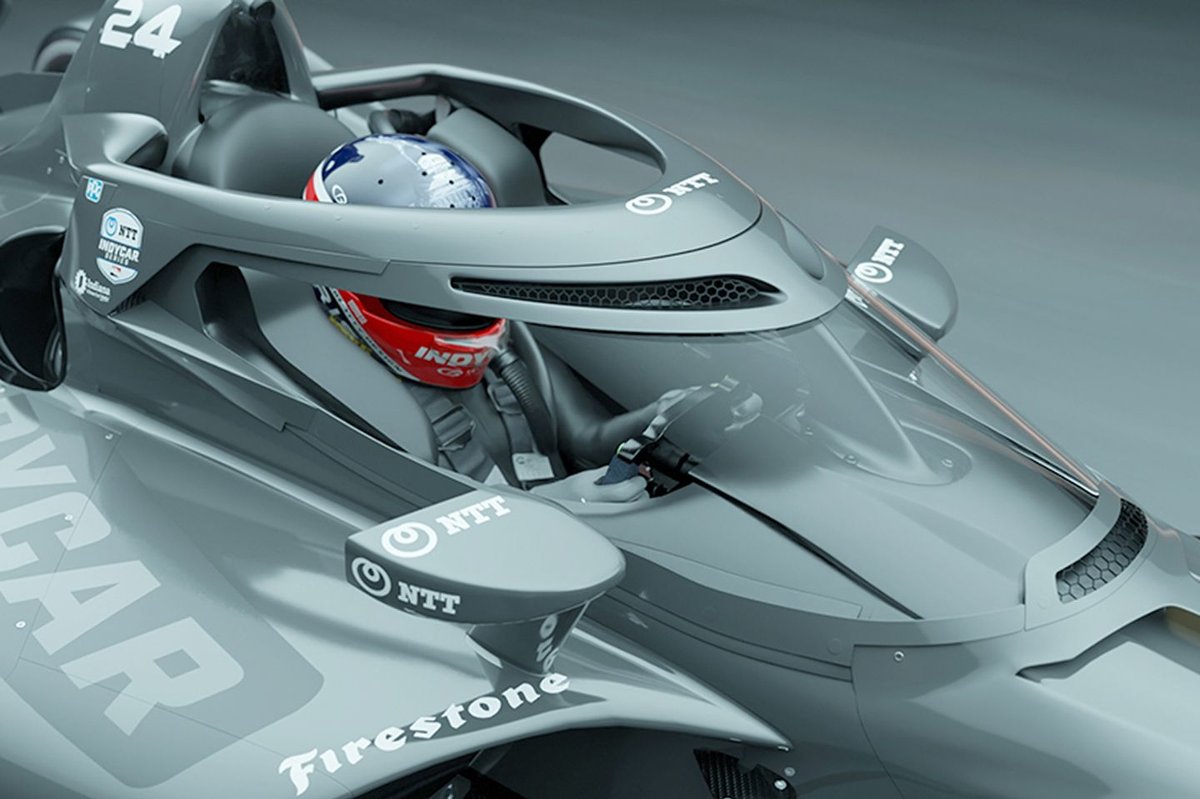IndyCar recently revealed an upgraded aeroscreen featuring a fresh design geared towards improving driver cooling in the cockpit, all while upholding stringent safety protocols. Initially scheduled for debut at the fourth points-paying round on the Indianapolis Motor Speedway road course in May, the newest iteration was expedited for use in two events ahead of schedule, facilitated by sufficient supply.
Teaming up with Red Bull Advanced Technologies, IndyCar introduced the aeroscreen in 2020 as part of its safety initiatives, mandating its use on various tracks. The device features a PPG ballistic windscreen secured by a titanium frame crafted by Pankl. The newest iteration of the aeroscreen weighs in at 14.5 pounds, a notable reduction from the original 18.8 pounds.
The titanium frame, now 3D-printed and mandated since the season’s commencement, maintains the strength of its predecessor while shedding 6.8 pounds, resulting in a combined weight reduction of 11.1 pounds. Notably, improvements in driver cooling have been prioritized, with added vents and a top front duct angled towards the driver’s chest, constructed using 3D-printed rubber to mitigate hand injuries during accidents.

Moreover, the revised aeroscreen reduces downforce by approximately 35 pounds, according to Tino Belli, the IndyCar Series’ director of aerodynamic development. Belli emphasized that weight reduction was a primary objective of the 2.0 version, alongside enhancing driver ventilation and ensuring the thinner polycarbonate remains as robust as its thicker counterpart.
Addressing concerns raised by drivers regarding cockpit heat retention during the aeroscreen’s debut, Belli noted that ventilation improvements were made without necessitating significant redesign. A new vent, positioned underneath the titanium top frame, directs airflow toward the driver’s chest. Additionally, teams have the option to integrate filters into the honeycomb mesh to prevent dust ingress into the cockpit.
Belli underscored the significance of the aeroscreen as a comprehensive safety solution for driver cockpits, highlighting its efficacy in various situations since its inception. The aeroscreen’s evolution not only prioritizes safety but also emphasizes advancements in driver comfort, ventilation, and overall performance, reflecting IndyCar’s commitment to continual improvement in safety measures.

